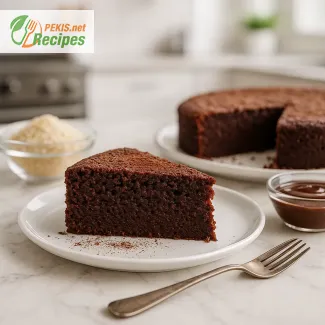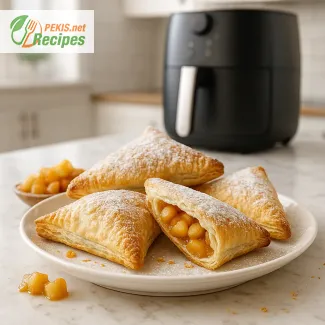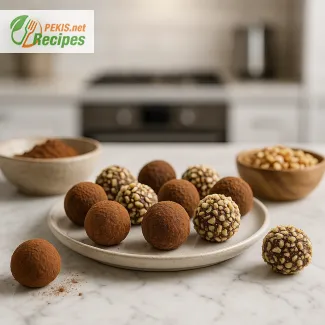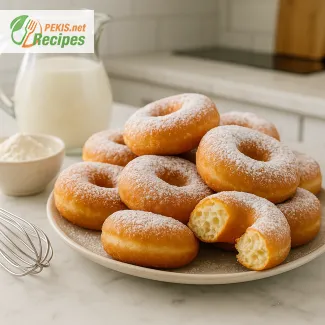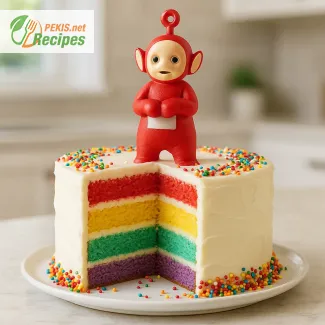
The Ultimate Guide to Cupcake Frosting: Achieve the Perfect Texture and Taste Every Time
Mastering Buttercream for Show-Stopping Cupcakes
When it comes to cupcakes, the cake might be the base, but the frosting is the star. A beautifully piped swirl of creamy, smooth, and flavorful frosting transforms a simple baked good into a work of edible art. Whether you're preparing treats for a birthday party, a wedding shower, or a cozy weekend bake, the right cupcake frosting sets the tone and enhances every bite.
Cupcake lovers and home bakers know that the secret to a memorable cupcake isn't just the sponge—it’s that rich, velvety crown that sits on top. This is where buttercream frosting truly shines. It brings not only sweetness but also structure, texture, and elegance to your creation. With just a few quality ingredients and the right technique, you can create a frosting that’s silky yet stable, fluffy yet firm, sweet but not cloying.
This guide is all about helping you understand what makes a perfect cupcake frosting and why buttercream is one of the most beloved choices around the world. From American-style buttercream that’s wonderfully sweet and simple to pipe, to more sophisticated variations like Swiss meringue or French buttercream, every style has its own charm. However, for everyday cupcakes that need to impress without overcomplicating, nothing beats a classic buttercream frosting.
What makes this frosting so popular isn’t just the flavor—it’s also the incredible versatility. You can tint it any color, flavor it with extracts, coffee, chocolate, or fruit purées, and pipe it into rosettes, swirls, or ruffles. It’s forgiving for beginners and flexible for professionals. Best of all, it holds up well in most environments, making it ideal for parties and special events.
Another reason buttercream remains a staple in baking is how it complements the delicate texture of cupcakes. While some icings can overwhelm or sink into the cake, a well-made buttercream rests lightly on top, adding a fluffy and creamy contrast to a moist crumb. This balance of textures is what turns a good cupcake into a truly unforgettable one.
The joy of making buttercream frosting is that it doesn’t require any fancy equipment or ingredients. With butter, powdered sugar, a touch of milk or cream, and your chosen flavoring, you’re already halfway there. And once you've mastered the basic technique, you can start exploring endless variations: add cocoa powder for a rich chocolate version, espresso for a grown-up twist, or even lemon zest for a fresh, zippy profile.
Let’s not forget how stunning your cupcakes will look. A well-frosted cupcake is instantly more appealing—whether it’s piped high like a bakery treat or simply spread in rustic swirls. It invites the eye and teases the palate before the first bite. That moment when someone peels away the cupcake liner and sinks their teeth into the soft sponge and fluffy frosting? That’s where the magic happens.
Cupcake frosting is also a wonderful creative outlet. It allows you to personalize each batch of cupcakes for any season or celebration. Add a drop of food coloring to match your theme, sprinkle on some edible glitter or sugar pearls, and you’ve got a dessert that’s as festive as it is flavorful. And thanks to buttercream’s excellent structure, your decorations will stay put—even during transport or on a warm day.
In short, the right cupcake frosting isn’t just a topping—it’s a statement of flavor, artistry, and care. Whether you’re baking for a crowd or just indulging in a quiet moment of creativity, mastering buttercream will open the door to a world of delicious possibilities.
In the following recipe, you'll discover a tried-and-tested method for creating the best cupcake frosting using just a few pantry staples. It's a foolproof technique that ensures a luscious, creamy result every single time. Once you’ve got it down, your cupcakes will never be the same again.
So grab your mixing bowl, choose your favorite piping tip, and get ready to whip up the kind of frosting that will make your cupcakes the highlight of any occasion. Whether you’re a seasoned baker or just starting out, this buttercream frosting is about to become your go-to topping for all things sweet and celebratory.
- Bring the butter to room temperature. It should be soft but not melted. This ensures a smooth and creamy texture without lumps.
- Beat the butter. Using a hand mixer or stand mixer with a paddle attachment, beat the butter on medium speed for 5 minutes until it becomes pale and fluffy. Scrape down the sides as needed.
- Add the powdered sugar gradually. Lower the mixer speed and add the powdered sugar in thirds, beating well after each addition. This avoids sugar clouds and allows for a smooth blend.
- Add vanilla extract and salt. Mix in the vanilla and salt until fully incorporated. These two ingredients enhance flavor and balance the sweetness.
- Adjust the consistency. Add milk one tablespoon at a time, beating until the frosting reaches your desired texture – creamy, spreadable, and light.
- Whip the frosting. Beat the mixture for an additional 2-3 minutes until it is silky smooth and holds soft peaks.
- Frost your cupcakes. Use a piping bag with a star tip or simply spread the frosting with a spatula. Decorate immediately or store covered at room temperature for up to 1 day, or refrigerated for up to 5 days.
Enhancing Your Homemade Frosting: Tips for Taking Cupcake Toppings to the Next Level
Creative Ways to Refine and Personalize Classic Buttercream
Cupcake frosting may seem like a straightforward component of dessert, but the truth is, there’s a world of nuance behind each swirl. A good buttercream frosting is more than just sugar and butter—it’s a balanced expression of sweetness, texture, and artistry. While the traditional recipe delivers consistent and delicious results, there's always room to experiment and refine. Whether you're aiming for a healthier twist, a more luxurious flavor profile, or better performance in warm weather, small tweaks can make a significant difference.
Choosing the Right Butter for Better Flavor
The foundation of any buttercream is, of course, butter. Using high-quality unsalted butter can elevate your frosting by adding depth and richness. European-style butter, which contains a higher fat content (around 82% compared to standard 80%), yields a creamier and smoother texture, making your frosting more luscious. The subtle tang and silkiness of cultured butter can also add complexity to the flavor, enhancing even a simple vanilla profile.
Upgrading with Natural Flavor Enhancers
Vanilla extract is a staple, but for a more intense and aromatic result, consider using vanilla bean paste or even fresh vanilla seeds. These alternatives introduce a more concentrated flavor and visual appeal, with little black flecks hinting at real ingredients. For a floral or citrus touch, try adding orange blossom water, lemon zest, or even a few drops of almond extract—each addition brings a unique layer of sophistication.
Using Salt Strategically
While often overlooked, salt plays a vital role in balancing the sweetness of buttercream. Instead of basic table salt, opt for fine sea salt or kosher salt, which dissolve more easily and provide a subtler flavor lift. A pinch of salt won’t make your frosting salty—it will highlight the buttery notes and temper the sugariness.
Achieving the Perfect Texture
A key to great frosting is texture. If your buttercream turns out too thick, adding a splash more whole milk or even heavy cream (for extra richness) can loosen it while adding smoothness. On the other hand, if it’s too soft—especially on warm days—reducing the liquid slightly or chilling the mixture briefly can help regain structure.
Another technique is to whip the frosting for longer—once all ingredients are incorporated, an additional 3-5 minutes of mixing can introduce air and create a fluffy, cloud-like consistency. However, be careful not to overbeat, as this can make the frosting unstable or too airy to hold decorative shapes.
Creative Ingredient Additions
You can personalize your frosting by incorporating extra ingredients that influence both taste and appearance:
- Cocoa powder or melted dark chocolate adds richness and depth for a chocolate buttercream.
- Instant espresso powder intensifies the flavor and complements both vanilla and chocolate bases.
- Freeze-dried fruit powders (like strawberry or raspberry) provide natural color and a concentrated fruit taste without altering the texture.
- Cream cheese can be added for a tangy version that’s especially popular with red velvet cupcakes.
Each of these additions brings a new dimension to your cupcakes, making them feel bespoke and bakery-quality.
Avoiding Common Mistakes
Even the most experienced bakers can encounter issues when making frosting. Here are some common pitfalls—and how to prevent them:
- Butter is too cold or melted: Start with room-temperature butter; cold butter won’t whip properly, and melted butter will separate.
- Lumpy frosting: Always sift your powdered sugar before mixing to avoid clumps.
- Grainy texture: This can occur if the sugar isn’t fully integrated. Beat thoroughly and ensure all ingredients are fully emulsified.
- Overly sweet frosting: Consider reducing the sugar slightly or balancing it with a tangy or bitter component (like espresso or citrus zest).
Making It Healthier
If you're looking for a lighter version, you can substitute some or all of the butter with plant-based alternatives such as avocado, nut butters, or vegan margarine. For sweetness, monk fruit, stevia, or erythritol can replace powdered sugar, although textures and sweetness levels may vary, so small test batches are recommended.
Using Greek yogurt or quark in combination with a reduced amount of butter can also yield a lighter frosting with added protein and a creamy, tangy flavor. These alternatives not only lower the calorie count but can enhance the overall nutritional profile of your cupcakes.
Homemade vs Store-Bought: Why Fresh is Best
While it's convenient to grab a tub of frosting from the store, homemade buttercream offers undeniable advantages:
- No preservatives or artificial flavors
- Customizable taste and texture
- Better consistency for piping and decorating
- Fresher, more vibrant flavor
The act of making your own frosting allows you to control every element—how sweet it is, what flavor profile it follows, and how well it pairs with your cupcake base. Plus, the satisfaction of making it from scratch adds a personal touch that elevates even the simplest baked goods.
Pairing Ideas and Flavor Combos
Buttercream can be adapted to suit a variety of cupcake bases. For instance:
- Vanilla buttercream with lemon poppy seed cupcakes offers a bright, fresh pairing.
- Chocolate cupcakes topped with raspberry buttercream make a romantic and indulgent dessert.
- Spiced carrot cupcakes go wonderfully with a honey cinnamon buttercream.
- Coconut cupcakes pair beautifully with a lime or pineapple buttercream.
Each combination allows you to showcase creativity and balance different flavor profiles, enhancing both visual appeal and taste experience.
Improving a traditional buttercream frosting recipe is about more than just adding new ingredients—it's about understanding each component’s role and how subtle shifts can completely transform the final result. Whether you’re aiming for something lighter, richer, or simply more personalized, taking control of your frosting is a step toward next-level baking. With a bit of experimentation and attention to detail, you can create a cupcake topping that’s not just good, but unforgettable.
Contains allergens:
- Milk
- Possible cross-contamination with gluten during processing of powdered sugar or vanilla extract depending on the brand.
Gluten-free: Yes, if all ingredients are certified gluten-free.
Substitution tips:
- Dairy-free: Use plant-based butter (same amount) and oat or almond milk (30 ml / 2 tbsp).
- Sugar-free option: Use powdered erythritol or a sugar-free icing mix in a 1:1 ratio, adjusting to taste.
- Vanilla-free option: Use almond extract (2.5 ml / ½ tsp) for a different but rich flavor.
- Vitamin A: 450 IU – supports vision and immune function
- Calcium: 9 mg – contributes to bone health
- Iron: 0.1 mg – supports oxygen transport in blood
- Potassium: 10 mg – helps maintain normal blood pressure
- Magnesium: 1 mg – supports muscle and nerve function
- Vitamin E (from butter): 0.1 mg – protects cells from oxidative stress
- Flavonoids (from vanilla extract): trace – contribute to anti-inflammatory benefits
- Beta-carotene (from butter): 0.05 mg – supports skin and eye health

